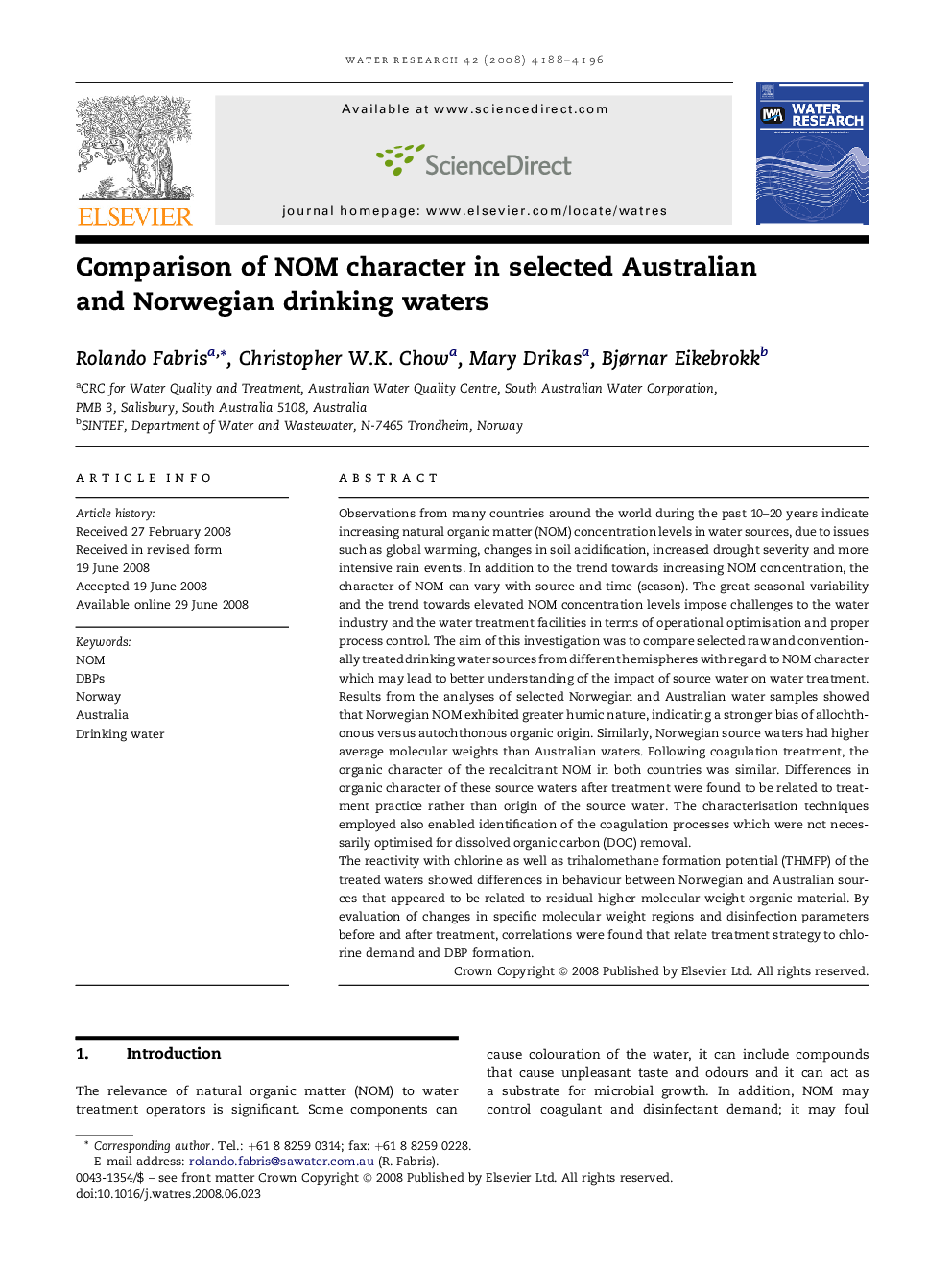| کد مقاله | کد نشریه | سال انتشار | مقاله انگلیسی | نسخه تمام متن |
|---|---|---|---|---|
| 4484817 | 1316932 | 2008 | 9 صفحه PDF | دانلود رایگان |

Observations from many countries around the world during the past 10–20 years indicate increasing natural organic matter (NOM) concentration levels in water sources, due to issues such as global warming, changes in soil acidification, increased drought severity and more intensive rain events. In addition to the trend towards increasing NOM concentration, the character of NOM can vary with source and time (season). The great seasonal variability and the trend towards elevated NOM concentration levels impose challenges to the water industry and the water treatment facilities in terms of operational optimisation and proper process control. The aim of this investigation was to compare selected raw and conventionally treated drinking water sources from different hemispheres with regard to NOM character which may lead to better understanding of the impact of source water on water treatment. Results from the analyses of selected Norwegian and Australian water samples showed that Norwegian NOM exhibited greater humic nature, indicating a stronger bias of allochthonous versus autochthonous organic origin. Similarly, Norwegian source waters had higher average molecular weights than Australian waters. Following coagulation treatment, the organic character of the recalcitrant NOM in both countries was similar. Differences in organic character of these source waters after treatment were found to be related to treatment practice rather than origin of the source water. The characterisation techniques employed also enabled identification of the coagulation processes which were not necessarily optimised for dissolved organic carbon (DOC) removal.The reactivity with chlorine as well as trihalomethane formation potential (THMFP) of the treated waters showed differences in behaviour between Norwegian and Australian sources that appeared to be related to residual higher molecular weight organic material. By evaluation of changes in specific molecular weight regions and disinfection parameters before and after treatment, correlations were found that relate treatment strategy to chlorine demand and DBP formation.
Journal: Water Research - Volume 42, Issue 15, September 2008, Pages 4188–4196